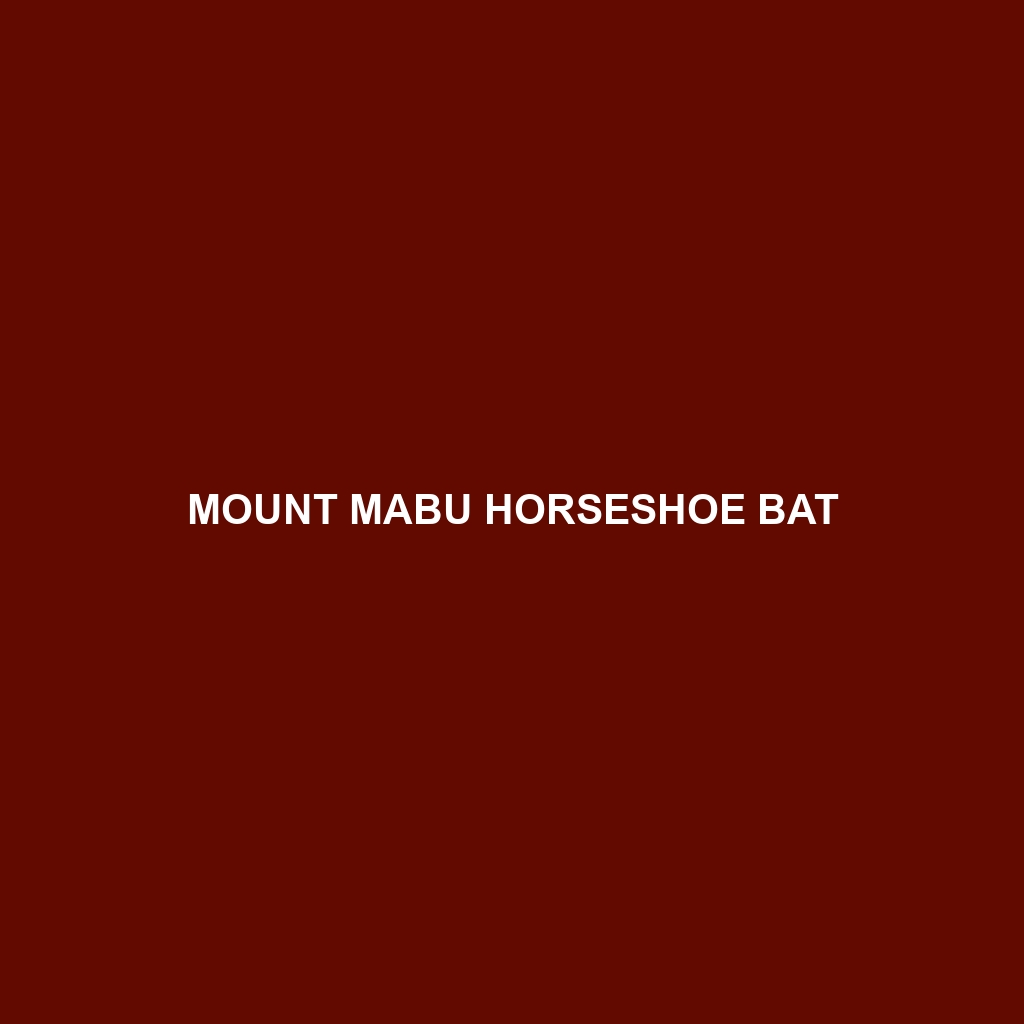Great Woolly Horseshoe Bat
Common Name: Great Woolly Horseshoe Bat
Scientific Name:
Habitat
The Great Woolly Horseshoe Bat is primarily found in tropical and subtropical regions. Its geographic range includes parts of Southeast Asia and specific locations in the southern provinces of China. This species typically inhabits dense forests, caves, and rocky outcrops, relying on these environments for their roosting needs and foraging activities.
Physical Characteristics
This species of bat is characterized by its notably large size, with a wingspan that can reach up to 35 cm. The Great Woolly Horseshoe Bat features a distinct woolly coat that can range in color from light brown to dark grey. Its most distinguishing characteristic is the horseshoe-shaped noseleaf, which aids in echolocation—a critical feature for finding prey. The robust body and large ears enhance its hearing abilities, making it an adept nocturnal hunter.
Behavior
Great Woolly Horseshoe Bats exhibit fascinating behaviors, including a unique social structure where they roost in large colonies during the day. At night, they become highly active foragers, utilizing echolocation to navigate through the dark and locate insects. Often seen flying at low altitudes, these bats are known for their agility and speed, making them engaging to observe.
Diet
The diet of the Great Woolly Horseshoe Bat primarily consists of small insects, such as moths and beetles. Utilizing its sophisticated echolocation capabilities, it can identify and capture prey mid-flight. This insectivorous diet plays a crucial role in controlling pest populations in their habitats.
Reproduction
Breeding in the Great Woolly Horseshoe Bat typically occurs once a year, with mating seasons varying slightly depending on geography. After a gestation period of approximately three months, females give birth to a single pup. The mother-nurtured pups are dependent on their mothers for several weeks, during which they learn essential survival skills.
Conservation Status
The Great Woolly Horseshoe Bat is currently classified as ‘Vulnerable’ by the IUCN Red List, largely due to habitat destruction and hunting pressures. Conservation efforts are crucial for ensuring the survival of this unique species and its habitats.
Interesting Facts
One fascinating fact about the Great Woolly Horseshoe Bat is its exceptional lifespan, with some individuals living over 20 years in the wild. Additionally, these bats have been observed engaging in complex social interactions and vocalizations, which is quite rare among bat species.
Role in Ecosystem
The Great Woolly Horseshoe Bat plays a vital role in its ecosystem as a pollinator and pest controller. By feeding on insects, it helps maintain the balance of local insect populations. Furthermore, it contributes to the health of forest ecosystems through its pollination activities, showcasing its importance in biodiversity and ecological balance.
